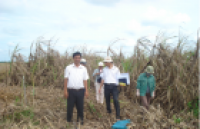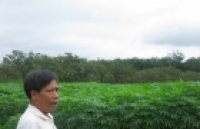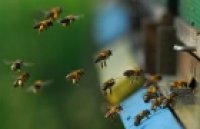| Precise integration of large DNA sequences in plant genomes using PrimeRoot editors |
|
A technique for chromosomal insertion of large DNA segments is much needed in plant breeding and synthetic biology to facilitate the introduction of desired agronomic traits and signaling and metabolic pathways. Here we describe PrimeRoot, a genome editing approach to generate targeted precise large DNA insertions in plants. Third-generation PrimeRoot editors employ optimized prime editing guide RNA designs |
|
Chao Sun, Yuan Lei, Boshu Li, Qiang Gao, Yunjia Li, Wen Cao, Chao Yang, Hongchao Li, Zhiwei Wang, Yan Li, Yanpeng Wang, Jun Liu, Kevin Tianmeng Zhao, Caixia Gao Nat Biotechnol.; 2024 Feb; 42(2):316-327. doi: 10.1038/s41587-023-01769-w. AbstractA technique for chromosomal insertion of large DNA segments is much needed in plant breeding and synthetic biology to facilitate the introduction of desired agronomic traits and signaling and metabolic pathways. Here we describe PrimeRoot, a genome editing approach to generate targeted precise large DNA insertions in plants. Third-generation PrimeRoot editors employ optimized prime editing guide RNA designs, an enhanced plant prime editor and superior recombinases to enable precise large DNA insertions of up to 11.1 kilobases into plant genomes. We demonstrate the use of PrimeRoot to accurately introduce gene regulatory elements in rice. In this study, we also integrated a gene cassette comprising PigmR, which confers rice blast resistance driven by an Act1 promoter, into a predicted genomic safe harbor site of Kitaake rice and obtain edited plants harboring the expected insertion with an efficiency of 6.3%. We found that these rice plants have increased blast resistance. These results establish PrimeRoot as a promising approach to precisely insert large segments of DNA in plants.
See https://pubmed.ncbi.nlm.nih.gov/37095350/
|
|
|
|
[ Tin tức liên quan ]___________________________________________________
|


 Curently online :
Curently online :
 Total visitors :
Total visitors :


